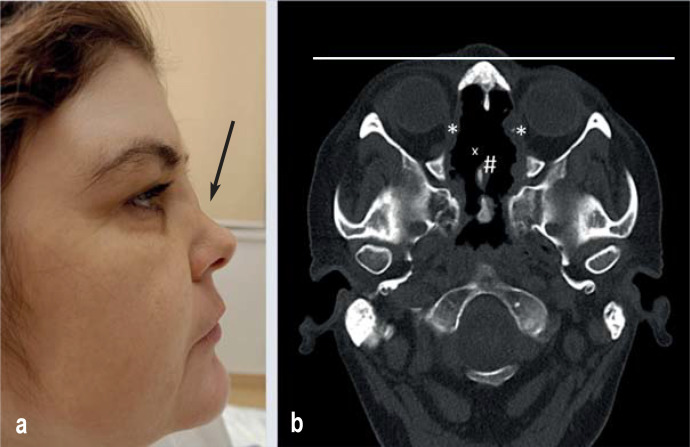A 35-year-old woman presented to our Rheumatology Department. She complained of bloody nasal discharge, hemoptysis and mild dyspnea, as well as myalgia and arthralgia. She had been treated for this condition in Ukraine and only recently immigrated to Germany. No previous medical findings were available. On clinical examination, the patient had a saddle nose (Figure a, arrow) and enophthalmos (Figure b, line). A computed tomography scan of the paranasal sinuses (Figure b) showed extensive bony destruction, including the basal and medial orbital walls (*) as well as all turbinates (x) and the nasal septum (#). She had no history of visual impairments. Given the obvious and typical clinical findings, granulomatosis with polyangiitis was suspected. The diagnosis was confirmed by further diagnostic evaluation, showing pulmonary and renal involvement as well as positive PR3-ANCA findings. Treatment with rituximab was initiated. Although the condition is rare, granulomatosis with polyangiitis should be considered a possible cause of persistent bloody rhinitis and/or hemoptysis in order to halt the immune-mediated osseous destruction.
Figure:
a) Clinical presentation, ”arrow“ saddle nose; b) CT of the paranasal sinuses
*bony destruction of both medial orbital walls; # bony destruction of the nasal septum, x bony destruction of all turbinates; line: enophthalmos of the right eye
Image credits: Tamo Siemons, Justus Liebig University Giessen, Department of Diagnostic and Interventional Radiology.
Acknowledgments
Translated from the original German by Ralf Thoene, M.D.
Footnotes
Conflict of interest statement: The authors declare no conflict of interest.



